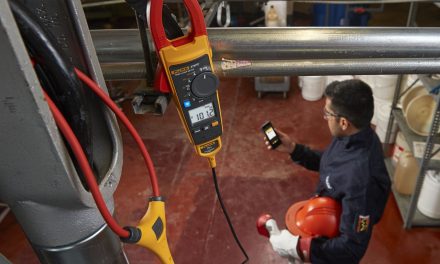Employee health and wellbeing should be more than just an HR initiative. It is a business imperative that will result in greater operational efficiency, higher employee productivity, and happier customers – and is key to achieving operational excellence.
Over the last two years, manufacturers across the globe have unanimously felt the effects of the COVID-19 pandemic and united together to ensure continuation of service and supply while operating in exceptionally uncertain conditions. In light of the dual pressure of both performance and pandemic, protecting not just the health but also the happiness of employees, while maintaining best practices in manufacturing operations, has become a business imperative.
In this article, Carl Haycock, UK Operations Director, Domino, shares his tips for embracing a culture of continuous improvement, while keeping the health and wellbeing of employees at the centre of business activities.

Carl Haycock, UK Operations Director, Domino
People first
Marcus Lemonis’ ‘Three Ps’ – ‘People, Process, and Product’ – are frequently cited as the building blocks of any highly successful operation. Arguably, these principles are today more important than ever before:
- People are the most important resource in a company – ultimately, they are the ones who drive business improvement and so ensuring their motivation, capability, and wellbeing is key
- Processes must support people to work in the most efficient, productive, and safe manner, with the use of appropriate technology where it supports operational aims
- Product – the product or service needs to have features to meet and exceed the customer’s needs, and be designed in a way that supports optimum manufacture, reliability, and serviceability
It sounds like a simple approach, but many company product launches miss the focus on at least one of these aspects. From my experience working in manufacturing, simple and visual approaches work best, as any changes have a much better chance of being implemented well and sustained over time.
Ensuring alignment
People like to know that what they are doing is adding value.
People feel better about themselves, and their work, if they know that what they are doing has a purpose – it is an important part of why people go to work.
Having a clear company purpose helps to motivate and inspire employees, and ensure that everyone feels aligned with their colleagues, and with the business as a whole. In Domino’s case, this purpose is defined as:
“To apply industrial printing expertise and reliable solutions to help the world’s manufacturers be sustainable and cut waste while attracting, informing, and protecting consumers.”
A company’s purpose should be communicated and reinforced at all levels of the business and aligned to staff objectives and key performance indicators. By doing this, a business can help to avoid conflicts that may otherwise occur and cause demotivation.
To borrow a simple analogy, companies work better, and employees feel better when everyone rows in the same direction.
Process design
Manufacturing processes should be strategically designed and should utilise appropriate technology to support operational aims.
Domino’s manufacturing process has been designed to support the company’s strategy of producing highly configurable printers for personalised customer choice, in short lead times.
Printers are built to order, and manufacturing execution system (MES) technology is utilised to verify the correct build and prevent mistakes from being passed onto the next stage of the process.
In addition, machine-based decision-making is employed at key test points to ensure any potential quality trends or issues are spotted early and rectified. This not only benefits the process, but it also helps to improve employee satisfaction levels – after all, no-one would like to find out at the very end of the production process that they have been making defects all day!
In Domino’s case, utilising these processes and technologies has resulted in a reduced average manufacturing time for each machine, because once sub-assemblies are assembled to customer order, the process outcome is more predictable.
Identifying process improvements
To maximise potential, manufacturing companies need to encourage employees to create ideas, identify areas of improvement in systems and processes, and foster a culture of continuous improvement.
Lean Six Sigma is a great methodology for improving performance by systematically removing waste and reducing variation. It helps employees to recognise weak spots in processes and empowers them to put forward ideas for solutions and upgrades and deliver those improvements as individuals or as part of a team.
In addition, companies should make it easy for employees to submit ideas. One potential method of achieving this in manufacturing operations is using scannable QR codes that link to feedback forms. The presence of scannable codes around a factory, and at individual workstations, provides employees with ample opportunity to submit ideas as part of their daily work processes.
Promoting good employee health and wellbeing
Employees are instrumental in achieving success in business – with this in mind, it is paramount to ensure that they feel supported, recognised, and appreciated, and know that their opinions and ideas are heard and acted upon.
Protecting the ergonomic health of operators, for example, not only helps to prevent injury but also demonstrates that employee wellbeing is recognised as one of the key factors in designing and implementing production processes.
Steps to protect employee health can be anything from customisable workstations that can be tilted and height-adjusted to suit the needs of any operator, to wearable ‘backtrack’ devices that buzz when employees make non-preferred movements that could be detrimental to their long-term musculoskeletal health.
These may seem like small measures, but they have tangible effects in reinforcing a company’s commitment to its employees and making clear that their health and wellbeing permeates systems and processes – beyond HR.
Achieving operational excellence: measuring satisfaction
How do you know that your efforts are paying off? Ask the question.
Undertake regular employee surveys. Ask how you are doing. Encourage your employees to provide you with their feedback so you know where you can make improvements.
The benefits extend beyond employees. Improving your productivity allows more time for training and development, and investment in generating further process improvements that will improve delivery performance, customer feedback and satisfaction. This cycle of continuous improvement can only be enabled by keeping people at the heart of everything that you do.
Replicating success
Any manufacturing company that strives to achieve operational excellence will be well placed to ensure employees are at the heart of all business decisions.
In addition, there are several things that manufacturers can do to help create motivation and manage change:
Start small
Don’t try to do everything at once. If you are educating your people in continuous improvement, then very soon you will have more ideas and volunteers than you know what to do with. Quick organisational workplace projects work well when ‘before’ and ‘after’ results are publicised to demonstrate gains.
Make change highly visible
Keep people engaged by demonstrating when new positive initiatives are introduced; this can be anything from investment in company workwear or improvements to decoration and lighting. Make this highly visible and communicate at all levels of the business – and remember to celebrate successes and recognise and reward the new positive behaviours.
Start with ‘why’
Change can often bring concern and fear – to overcome this make it clear why you are introducing the change. Often, the best way to do this is to explain how it will impact the end customer. We all want to meet our customers’ expectations and needs – they are the ones who pay the bills – and employees want to make sure that customers are satisfied. Demonstrating why a change is important for the customer is a good way of overcoming any resistance to change.
If you do all these things, operational excellence will follow as a natural extension of employee health and wellbeing.




